Cecily Brown’s studio – an airy, light-filled loft overlooking the bustle of New York’s Union Square – is, at any given moment, home to as many as 50 works in various stages of completion. When I visit one afternoon in July, paintings and drawings of loosely defined figures emerging from energetic arrays of sweeping, abstract strokes seem to line almost every available surface, propped up in stacks against the walls or lying on the floor to dry. In spite of the summer heat, the studio is busy with activity. Brown is currently preparing for a survey of her work at the Louisiana Museum of Modern Art in Denmark, which will open in November – the latest in a series of solo exhibitions at the museum devoted to contemporary painters.
Brown tells me that Anders Kold, the show’s curator, has just sent her the final checklist, which includes works that span her career, from the late 1990s to the present. In that time, Brown has become known for large-scale works that straddle the border between figuration and abstraction, capturing the sensations of the body through lush applications of paint. Simultaneously channelling the Old Masters and Abstract Expressionism, her paintings combine rigorous compositional structure with a sense of intuitive intensity. ‘For me, seeing a group of works together in a show is like the final part of the whole process of making paintings: seeing how they relate, what story they tell, and what they mean once they’re in the world. In the studio it can be hard to really see things because there’s so much going on at once. The excitement of doing a show like this is that I get to see what I’ve been doing for the past 20 years,’ she says. ‘I feel like Anders is telling a very full story. It won’t be hung chronologically, but I think there’s a logic.’

Jicky (2009–10), Cecily Brown. Photo: Rob McKeever; © Cecily Brown
Brown’s approach to painting is similarly non-linear: often she works in groups, starting several new canvases at a time so she can experiment with different possibilities for a given composition or motif while maintaining a sense of freshness and spontaneity. ‘If you do something you like early on, the constant fear is losing it, but if you’ve got two or three or four going at once, they can all go in different directions,’ she explains. ‘One of the advantages of working on so many things at once is that you’re always in the mood to work on something.’ When she’s at an impasse with a painting, she’ll simply put it away for a while and move on to another, returning to it later with fresh eyes.
‘There’s a painting in here that I started in 2005 and just finished,’ she says, nodding toward a depiction of an androgynous nude dissolving into a protean field of gestural marks. For years, the canvas sat untouched in the corner of her studio, but she couldn’t quite bring herself to throw it away. Though 13 years is probably the longest it’s ever taken her to finish a painting, it’s not uncommon for Brown to work on a single canvas off and on for long stretches of time: ‘I’ll keep trying to bring things back from the grave.’ Her process, she says, ‘is very much about things percolating in the background, just having faith in the part of my brain that’s making decisions without my being aware of it.’
Born in London in 1969 and raised in Surrey, Brown grew up in a milieu of British artists and intellectuals: she is the daughter of the novelist Shena Mackay and the art critic David Sylvester, an early champion of Francis Bacon. (She didn’t learn of her real paternity until she was 21, previously believing Sylvester to be merely a close family friend.) She studied at Slade School of Fine Art in the early 1990s, but as a figurative painter she felt out of step with the London art scene, where the conceptually driven work of the YBAs was on the rise and painting was viewed with suspicion, if not outright scorn. ‘Subjectwise, I’ve always thought I have a lot in common with [the YBAs],’ she says. ‘I think they’re the children of Gilbert and George and Bacon in a way that I feel I am as well. I’ve just got a bit more Turner thrown in.’ Nevertheless, her unironic interest in the Old Masters and her refined painterly technique were viewed as old fashioned by many of her peers, and Brown jumped at the first opportunity to leave London.
She spent six months in New York as an exchange student in 1992 and returned permanently in 1994 after graduating from the Slade. Unlike the art world in London, which she saw as ‘very closed and not particularly friendly’, Brown felt immediately at home in New York: ‘You could just wander into an opening and people would actually talk to you. SoHo was still very alive with galleries, and there was loads of good art, stuff that I hadn’t seen before, like Koons, Richard Prince, and Mike Kelley. I couldn’t believe how much art there was everywhere.’
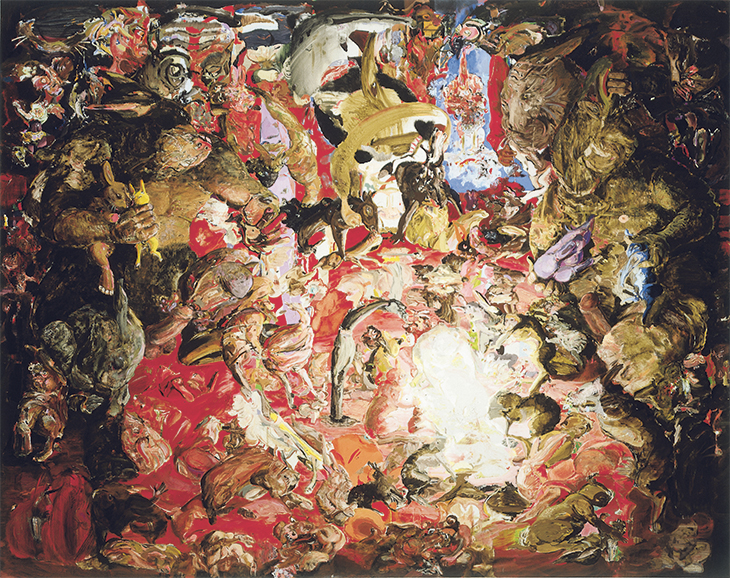
Untitled (1997), Cecily Brown. © Cecily Brown
Brown’s major break came not long after her arrival in New York: in 1997, she had a solo show at Deitch Projects, ‘Spectacle,’ which featured a series of luridly coloured paintings of rabbits engaged in absurd, graphic orgies. Appropriately, the Louisiana exhibition will begin with a work from this series (Untitled, 1997), a Boschian throng of intertwined animal bodies set against a pulsing red background. By the end of the decade, the bunnies had been replaced by human bodies: in works like Figures in a Landscape 1 (2001), Brown arranged overlapping, mid-coital nudes into expressive all-over compositions that obliterated the distinction between figure and ground, placing tangles of flesh-coloured strokes against loosely pastoral backdrops of verdant green. In these paintings, Brown exploited the sensuous qualities of freely applied oil paint to heighten the eroticism of the nude bodies she depicted, even when their contours were only barely perceptible. Her combination of sexual content and bravura brushwork, inviting comparisons to de Kooning, quickly captured the attention of the New York art world: along with contemporaries such as John Currin and Lisa Yuskavage, she was hailed as bringing about a revival in painting – a new ‘New York School’.
Brown modestly attributes her early success to ‘good luck and timing’ as much as anything else: ‘When Jeffrey Deitch first showed my work, it really helped that he’d never shown a painter before,’ she says. ‘If I’d shown somewhere else down the street in SoHo, it could have gone completely unnoticed, and I’d just be another oil painter who liked Old Masters.’ The spotlight intensified when she left Deitch for the powerhouse Gagosian Gallery in 1999, at the age of 29. (After 15 years with Gagosian, she left the gallery in 2015, and is now represented by Thomas Dane in London and Paula Cooper in New York.)

Figures in a Landscape I (2001), Cecily Brown. Photo: Rob McKeever; © Cecily Brown
The reception of her early work was often bound up with her public image: she was notoriously photographed in 2000 for a Vanity Fair article flirtatiously reclining on her studio floor, cigarette in hand, wearing low-rise jeans and a T-shirt emblazoned with a large dollar sign. For Interview, she posed for David LaChapelle in a miniskirt and bikini top next to a massive canvas from her 1999 series Boy Trouble, depicting a masturbating male nude against a ground of shocking pink.
‘It’s funny looking in retrospect, because I felt very guileless at the time,’ Brown says. ‘That’s just who I was, and I thought it was fun to embrace the attention. But looking back you can see how it could seem like too much – the fashion side of it mixed with the sexy paintings.’ Nevertheless, the obsessive focus on her physical appearance was tinged with a sexist double standard: as she points out, any number of male artists, including Jasper Johns and Brice Marden, posed for frivolous photo shoots in fashion magazines like Vogue without anyone questioning their seriousness. ‘John Currin was in half the same shoots as I was’ – including the Vanity Fair spread – ‘and he never got roasted for it,’ she says. ‘In a way, I’m glad it’s all past now, because it’s easier for people to look at the work in a more straightforward way. I think it distracted people for a really long time.’
Though the nude body still features prominently in Brown’s work, her paintings became less explicitly sexual over the years, relying on a more latent eroticism in place of overt depictions of sexual activity. Paintings such as Jicky (2009–10) and Handsome Stranger (2010) are up against the edge of abstraction, anchored by flashes of a defined limb woven among loose, swooping ribbons of paint. Her engagement with the academic tradition – though always a pronounced influence on her work – has become more evident in recent paintings: over the past several years, she has primarily focused on ensembles of figures, in dialogue with artists like Hogarth, Degas, and Delacroix. In works such as Name That Tune (2012), she depicts crowds of nude women, their bodies mostly rendered as blurred passages of peach and brown. Madrepora (Shipwreck) (2016) alludes to the trope of classical bathers, with a woman’s curving back silhouetted in bright white, set against a turbulent field of coloured strokes.

Name that Tune (2012), Cecily Brown. Photo: Rob McKeever; © Cecily Brown
In addition to her paintings, the Louisiana exhibition will include a selection of drawings and prints, aspects of her work that have tended to receive less attention. Though drawing has always played a crucial role in her process, Brown had never shown them in large numbers until an exhibition in 2016 at the Drawing Center in New York, which subsequently travelled to the Museum of Contemporary Art Santa Barbara. As with the academicians of the past, she sees drawing as a means of building up a painterly vocabulary: ‘That’s why you copy one thing rather than another,’ she tells me. ‘I hadn’t looked at my Hogarth drawings for many years, and when I went back to look at them in preparation [for the Drawing Center show], I was struck by how completely I’ve ripped off Hogarth’s compositions over and over.’ The influences are not, however, exclusively art historical: a group of works from 2013 was based on the cover of Jimi Hendrix’s 1968 album Electric Ladyland, which featured a harem-like photograph of 19 young nude women lounging on the ground, holding copies of his records.
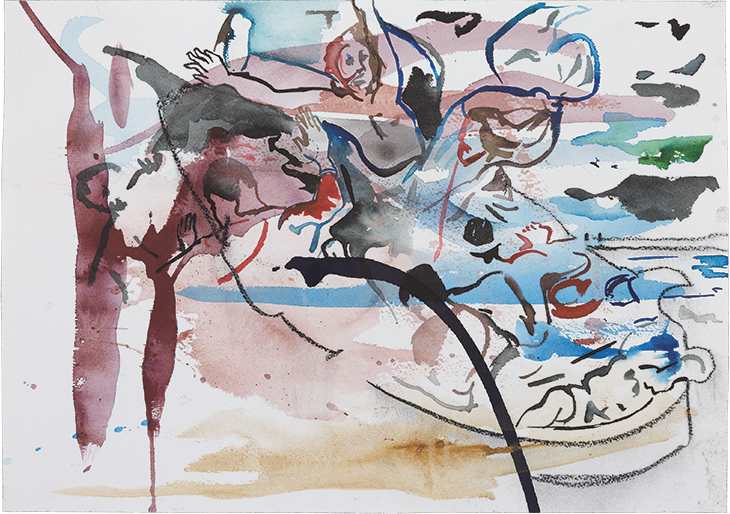
Untitled (Shipwreck) (2016), Cecily Brown. Photo: Genevieve Hanson; © Cecily Brown
While Brown’s paintings ‘are not usually a direct copy after one thing’, they reflect her process of metabolising influences through drawing, which ‘end up coming out in other twisted ways in the paintings’. She gives the example of Degas’s Young Spartans Exercising (1860), the subject of a suite of drawings included in the Drawing Center show. ‘I’m doing these paintings of young boys now, and they’re not from the Young Spartans image that I’ve copied so much, but I hope they’ve got something of Degas about them that comes through.’ The Louisiana exhibition will include a number of her Shipwreck drawings from 2016 – for which she copied the figure groups from paintings of shipwrecks by Géricault and Delacroix in ink and charcoal, using broad washes of blue and grey watercolour to suggest the surrounding seascape – which served as the basis for the paintings she exhibited last year at Paula Cooper. In the massive triptych A Day! Help! Help! Another Day! (2016) – designed, at 33 feet long, to immerse the viewer – she draws on the tumultuous intensity of Géricault’s Raft of the Medusa (1818–19) to depict the chaotic aftermath of a shipwreck, with a mass of nearly abstract figures pressed up against the surface of the picture plane.
One aspect of the Louisiana show Brown is particularly excited about, she tells me, is a series of new monotypes in which she has revisited her own past work, almost like ‘a mini retrospective in monotypes’ within the larger exhibition. Originally, she and Kold had planned to include a selection of existing monotypes she has been making alongside her paintings since the 1990s, but had difficulty tracking down many of the ones they wanted. She had recently begun a group of small paintings in which she reinterpreted her own past work – ‘It was incredibly liberating and fun,’ she says. ‘So much of the pressure is “what to paint,” but because I had 20 years of subjects to choose from it flowed’ – and decided to repeat the process in monotypes, working with her longtime printer, Two Palms. While their compositions and motifs are similar to those in her paintings, the monotypes require Brown to work more quickly, giving them a loose, spontaneous quality: in one example, recalling her earlier paintings of couples in a landscape, two recumbent figures embrace, rendered as a series of fluid, wavy lines against a ground of bright green.
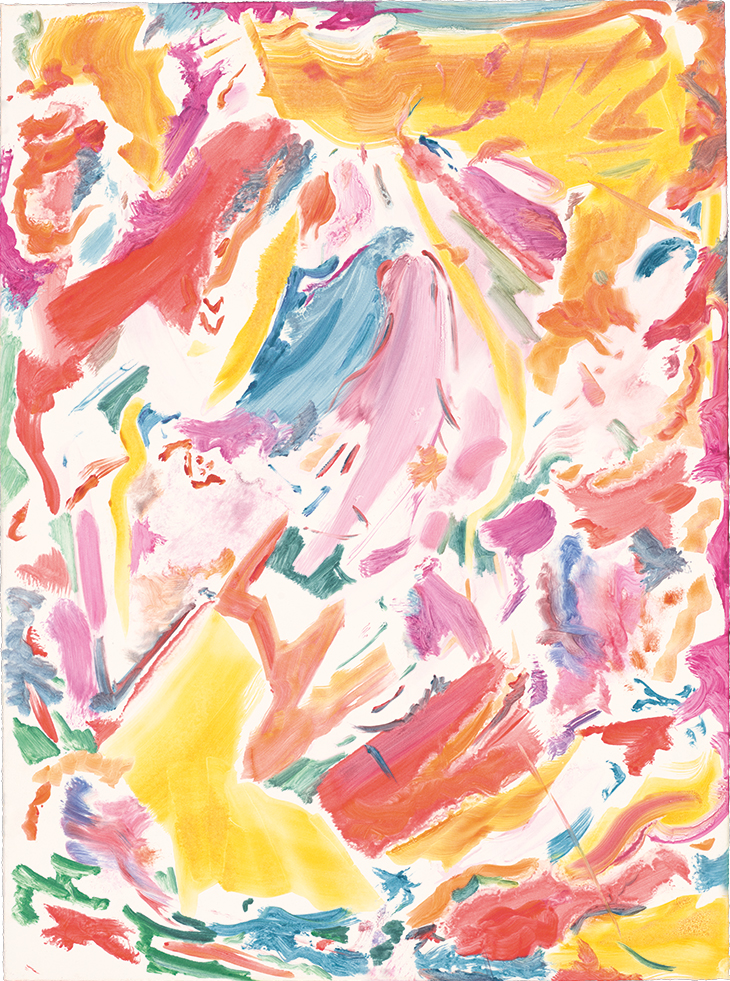
Untitled (2018), Cecily Brown. Photo: Brandon Israels & Doug Volle; © Cecily Brown
Of all the mediums she employs, she thinks of the monotypes as closest to her paintings: ‘In drawings I’m almost always copying from another source – it’s a way of getting information. Whereas painting and monotypes are more like putting information out there that’s already been digested.’ When she begins exploring a new subject in her paintings, she’ll often spend a week making monotypes first: ‘They help you get to the heart of the matter more quickly,’ she explains. ‘I often think of them not as studies for the paintings, but as studies while I’m working on paintings. You don’t get as caught up in the material aspect because they’re fast and you can’t pile the paint on.’
Preparing for the Louisiana exhibition has given Brown the opportunity to look back at her own oeuvre and distil the major themes and concerns that have returned again and again throughout the past 20 years: the depiction of the body, the long tradition of figurative painting, the visceral pleasure of manipulating paint. ‘The nice thing about getting older as an artist is that you have your own work to draw on,’ Brown says. ‘I’m someone who always draws on other people’s work, so now I can steal from myself as much as I have from other artists.’
‘Cecily Brown: Where, When, How Often and with Whom’ is at Louisiana Museum of Modern Art, Humlebaek, from 8 November–10 March 2019
(en.louisiana.dk).
From the October 2018 issue of Apollo. Preview and subscribe here.
Unlimited access from just $16 every 3 months
Subscribe to get unlimited and exclusive access to the top art stories, interviews and exhibition reviews.

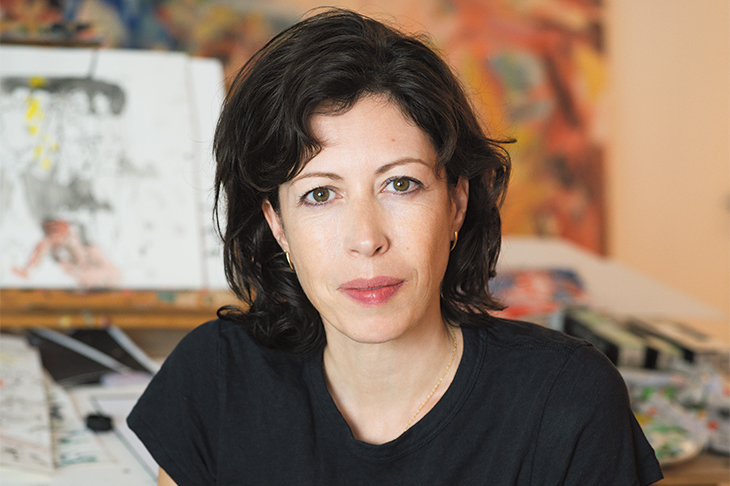
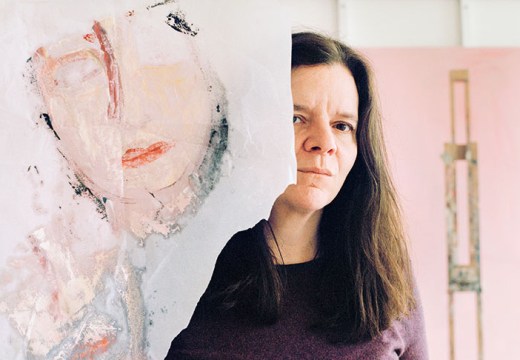
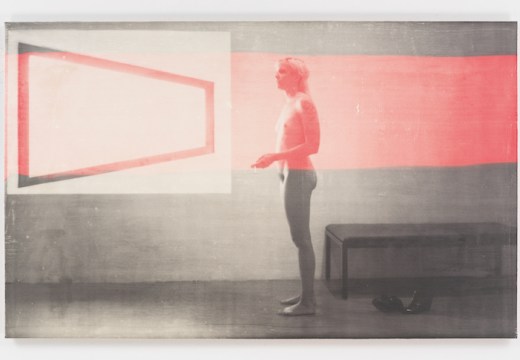










![Masterpiece [Re]discovery 2022. Photo: Ben Fisher Photography, courtesy of Masterpiece London](http://www.apollo-magazine.com/wp-content/uploads/2022/07/MPL2022_4263.jpg)
It’s time for the government of London to return to its rightful home